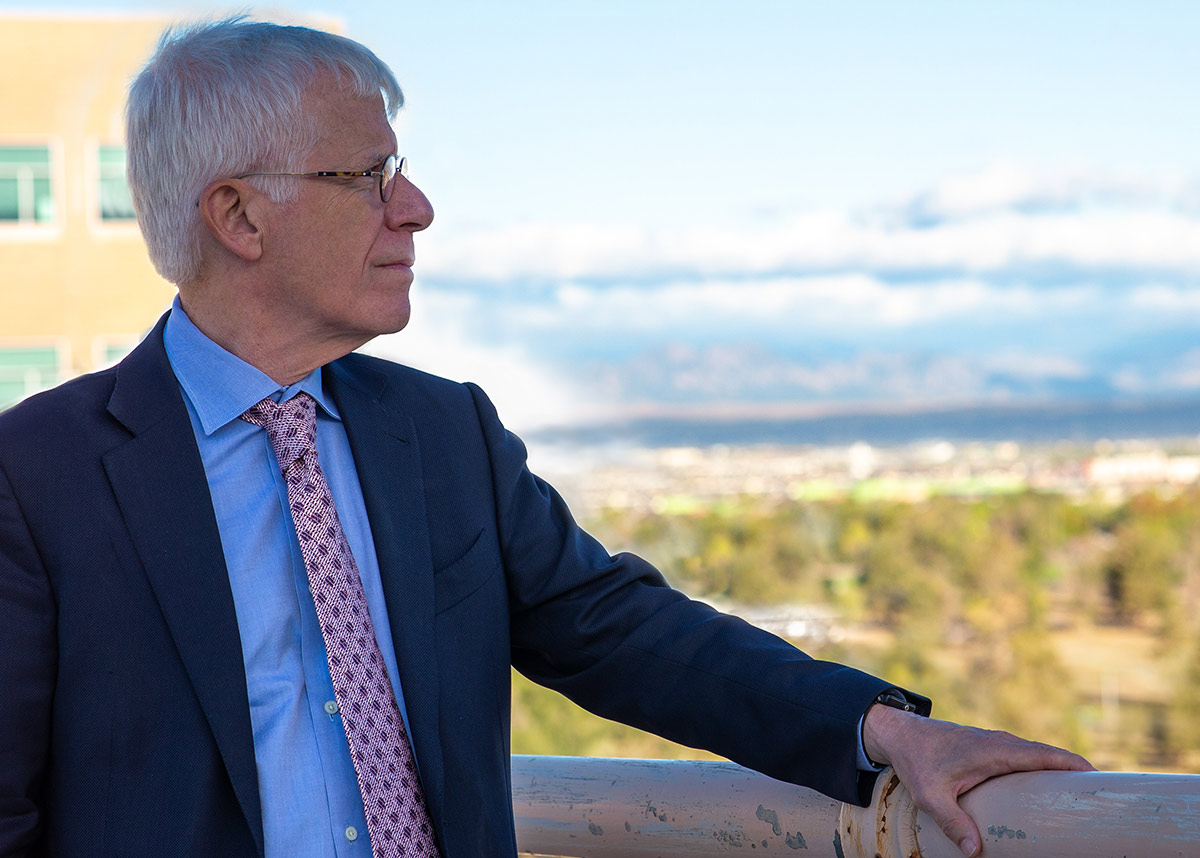The COVID-19 Pandemic: Omicron clobbers Colorado and tragic wildfires in Boulder County
Jan 4, 2022
Last year began with positive expectations. The pandemic was on the decline in Colorado and effective vaccines against SARS-CoV-2 were available after only a year, far more rapidly than anticipated. But the year brought variant-driven surges, like Delta, and the unexpected obstacle of vaccine hesitancy at a sufficient magnitude to leave a substantial proportion of the population susceptible to SARS-CoV-2. The year ended with the surge of the Omicron variant.
The new year starts with fear about the surge of the Omicron variant in progress, and its disrupting impact on our lives. We know more about Omicron every week: high transmissibility; immune escape reducing the effectiveness of current vaccines and natural immunity; and (fortunately) lesser clinical virulence compared with the Delta variant. We have learned that vaccination protects against more severe disease from infection with the Omicron variant, but to a lesser degree against infection itself. However, effectiveness against Omicron drops off about 10 weeks after a third dose of the mRNA vaccines.
For Colorado, like most other states, all indicators are moving in the wrong direction: case counts are soaring and exceed the November 2021 peak; test positivity is at 20%; and the number of Coloradans hospitalized has been rising for over a week. The critical question for Colorado: How high and how quickly will the Omicron curve rise? If Colorado’s epidemic follows the course of South Africa’s, the curve should peak quickly, perhaps in the next two to three weeks and certainly by month’s end. As to how high, that prediction cannot yet be made with enough certainty. With Omicron’s lesser virulence, the state could be spared from reaching or even exceeding hospital capacity to provide care for severely ill COVID-19 patients.
Beth Carlton, faculty member and modeling team colleague, has reminded our group that soaring case numbers represent people and their contacts who are unable to work. The impact from illness and from isolation after exposure is evident across many sectors, including healthcare and travel. In caring for people ill with COVID-19, the choke point for healthcare in many places is no longer available beds, but the available staff. Many governors, including Governor Polis, have called on the National Guard to fill gaps. The number of canceled plane flights is reported daily with critical shortages leading to 1,000+ cancellations during crowded holiday travel and more than 2,500 on Sunday. My wife and I experienced the consequences of COVID-19 when returning from Sarasota a week ago. After a significantly delayed departure from the gate, takeoff was further delayed by closure of Sarasota’s air traffic control because of a COVID-19 outbreak among the air traffic controllers and the substitution of Tampa controllers for managing airplane flow in Sarasota. Many other sectors are affected.
You may have been confused and puzzled by the changes to the CDC recommendations around isolation for those with COVID-19. In a December 27 press release, the CDC announced that persons with COVID-19 should isolate for five days and, if asymptomatic or with resolving symptoms, they can then be with other people while using a “well-fitting” mask for the next five days. Specific evidence supporting the change is not provided, although we do know that people are most infectious early on in the clinical course of SARS-CoV-2 infection. We also lack empirical evidence as to whether a mask will limit transmission of infections over these five days. CDC Director Walensky acknowledged that non-science considerations also figured into the selection of five days. The CDC is also being criticized for not incorporating testing at the five-day mark. Responding to reasonable pushback on this point, the CDC is re-evaluating its new guideline.
Thursday’s tragic Marshall and Middle Fork fires devastated neighborhoods in Superior and Louisville, affecting friends and members of the Colorado School of Public Health community. The photos show entire neighborhoods with lost homes, and thousands remain displaced. I know the mesas where the fires began; they abut a frequent cycling route. In the drought since August, the grasses have become ever drier and browner and were ready for conflagration. Remarkably high winds pushed the flames eastward at a terrifying pace.
Already, commentary has been offered about the role of climate change in causing such events. Attribution of any single event to climate change is difficult, but drought and more frequent and larger wildfires are a confidently predicted consequence of climate change. We do not anticipate fires racing through suburban neighborhoods. Are there lessons in this tragedy?
Alice Hill, the author of The Fight for Climate After COVID-19, would respond affirmatively. This recent book, a quick read, moves fluidly between lessons learned from the COVID-19 pandemic and strategies to address climate change that draw on mitigation and adaptation. The pandemic exposed some of the barriers to addressing climate change: a lack of planning and preparedness; inadequate tools for tracking; and an inability for governments to join and work on problems that span borders. She calls for optimism. We need it to bring energy and fortitude in addressing both the pandemic and climate change. Fight on.

Jonathan Samet, MD, MS
Dean, Colorado School of Public Health


